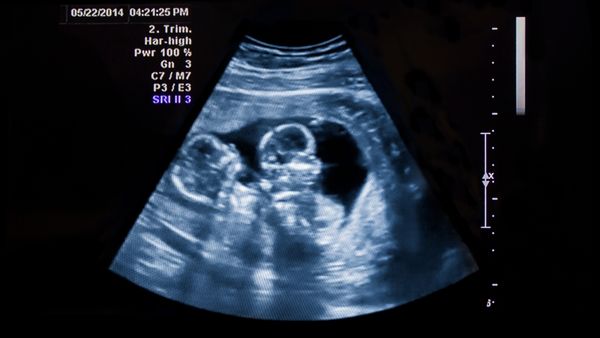Twin transfusion syndrome: answers to FAQs
What is twin transfusion syndrome? How common is it? Is it dangerous? Can it be treated? We'll answer the most commonly asked questions about this unusual complication that can affect identical twins.
Read time: 2 m
Verified by Jenny Jansson
Certified midwife
What is twin transfusion syndrome??
Twin transfusion syndrome (TTTS) can affect identical twins that share a placenta in the womb. The short explanation of this is that the babies' bloodstreams are connected and that one of the babies receives blood from the other. This means that one baby gets too much blood and the other baby doesn't get enough. Twin transfusion syndrome can occur anytime during pregnancy but is most common in weeks 16–25.
Is twin transfusion syndrome dangerous?
Yes, both babies can be very sick or die from twin transfusion syndrome. The baby who gets too little blood can suffer from a lack of oxygen and the one who gets too much can suffer from heart failure - both of these conditions in turn pose a risk of brain damage. The risks are reduced if the complication is detected early and treatment is started immediately. That's why you should go for frequent check-ups throughout the pregnancy when you are pregnant with twins sharing the placenta.
Can you treat twin transfusion syndrome??
Yes, in some cases the blood flow between the babies can be stopped by burning the blood vessel connections with a laser. The treatment is carried out with peephole surgery and usually poses no risk to the pregnant woman, but it also does not guarantee that the children will survive and be born healthy.
How common is twin transfusion syndrome??
Twin transfusion syndrome is an uncommon complication, affecting approximately 10–15% of all identical twins who share a placenta. Around 25–40% of all twins are identical and of these, about two-thirds share the placenta.
How is twin transfusion syndrome diagnosed??
Twin transfusion syndrome is usually discovered during an ultrasound examination, after an assessment of the amount of amniotic fluid and checking the babies' growth, bladders and blood circulation. The baby who doesn't get enough blood grows less well and stops urinating which results in less amniotic fluid. The baby gets too much blood and urinates more which results in more amniotic fluid.
Verified by Jenny Jansson
Certified midwife
More from Preggers
Hundreds of related articles, podcasts & more waiting for you in the Preggers app.
Download Preggers today.

